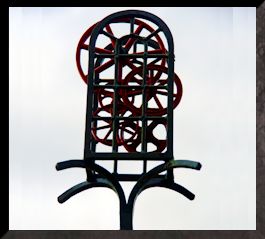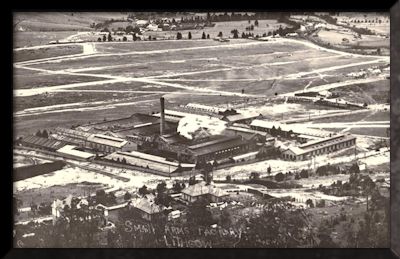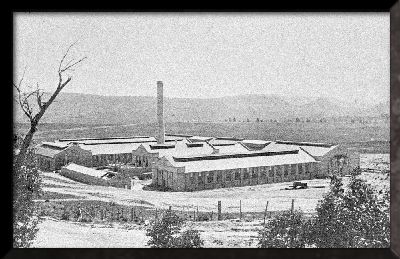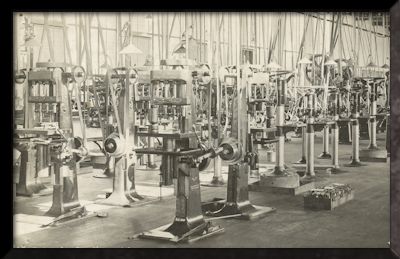|
|
|
|
||||||||
|
|
SMALL ARMS FACTORY BEGINS PRODUCTION
In 1903 the Lithgow Progress Association and MP Joseph Cook began lobbying for selection of Lithgow as the site for a small arms factory to support a defence arsenal for the newly federated country. William Sandford, then running Eskbank Ironworks, was a committed lobbyist and offered land, coal, iron and railway access. The Lithgow region also had the valuable resources of copper, limestone and labour, plus the physical protection of the Blue Mountains. By 1909 Cook was Minister for Defence, and the location of the Small Arms Factory was inevitable. Land had been purchased in Lithgow in 1908 by the Department of Home Affairs, for the purposes of defence. The goal was to produce rifles, pistols, bayonets and ammunition. The contract was let in July 1909, to the US company Pratt and Whitney, a controversial decision, given the ties of Empire, but proved to be the correct one. Construction dragged on to the extent that locals determinedly going about their daily lives, converted the factory dam to a popular bathing spot.
Somehow the American scientific management principles and hustle of Pratt and Whitney’s meshed with the ideals of local workers, and the company attracted union support. The Small Arms Factory Federated Union was on the ground, although the Federated Ironworkers’ Federation and the Amalgamated Society of Engineers had also vied for control. Although it had begun making rifle parts earlier that year, the official opening of the Small Arms Factory was held on 8 June 1912. The Small Arms soon kicked into gear, producing British designed guns for soldiers in World War I and, from 1916, producing Australian-designed guns for diggers on the front. The Small Arms Factory also began to reshape the township. The subdivisions of Extension Estate and Cooerwull Estate had already been made, and sold out quickly once the factory was mooted, but Littleton was purpose-built for the factory from 1918 to 1921. The factory buildings are outstanding examples of 20th century industrial architecture.
When World War I was over, the Small Arms Factory went into decline. Pratt and Whitney withdrew. However the factory was able to diversify, producing Westrex projectors, and hung on to a small workforce of around 250 until gun production slowly increased. By 1939, when World War II loomed, there were nearly 2,000 workers and at the peak of the conflict, around 1942, there were nearly 6,000 workers at the plant, including, for the first time, hundreds of women. These women were immortalised by Heliodore (Dore) Hawthorne, a talented painter and art teacher, who lived in Lithgow in the period 1939-1945. Lithgow City Council and the Small Arms Factory own some of her work. In the 1950s and 1960s the Modernist buildings that now fill the site were created and the site doubled as a high precision manufacturing facility, making sewing machines and casting machinery parts using the lost wax method. However, in recent decades production at the Small Arms Factory has contracted to such an extent that operations are confined to a corner of the old site. The Small Arms Factory was privatised in the 1990s and at the time of writing, was controlled by Thales. The Small Arms Factory Museum provides a window into this vital element of Lithgow’s industrial history. SOURCES Bob McKillop, Furnace, Fire and Forge: Lithgow’s Iron and Steel Industry 1874-1932, 2006 Greg Patmore, Robert Pillans: The first Labor Mayor of Lithgow, The Hummer, 2009 Donald Geoffrey Hoskins, The Ironmaster; The Life of Charles Hoskins 1851-1926, 1995 Sir Cecil Hoskins, The Hoskins Saga, 1968 Tony Griffiths, The Small Arms Factory and Its People, Vol. 1, 2006 |
|
||||||||
|
|
|
|




